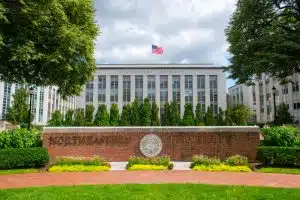Comparing colleges is an essential aspect to ensure that students make the best choice for their academic life. In the USA, Williams College and Vassar College are two distinguished institutions that attract students from all around the world due to their academic excellence and reputation. In this comprehensive article, we will explore the similarities and differences between Williams vs Vassar, covering various criteria.
Introduction: Understanding the Relevance of Comparing Williams vs Vassar
Before jumping into the details of Williams and Vassar, let’s understand the importance of comparing the two institutions. The selection of a college plays a vital role in an individual’s life. It impacts their future career path and personal growth. Consequently, making the right choice in terms of academic programs, campus life, and other amenities is essential. Therefore, by thoroughly analyzing these two colleges, students can know which of them will better suit their interests and goals.
Furthermore, comparing Williams vs Vassar can also provide valuable insights into the different approaches to education and campus culture. Williams College, for example, is known for its strong emphasis on undergraduate research and its close-knit community. On the other hand, Vassar College is renowned for its interdisciplinary approach to education and its commitment to social justice. By comparing these two institutions, students can gain a better understanding of what type of college experience they are looking for and make an informed decision about their future.
History of Williams and Vassar: A Brief Overview
Williams College, founded in 1793, is located in Williamstown, Massachusetts. Its mission is to foster scholarly inquiry and learning and provide outstanding liberal arts education.
In contrast, Vassar College, founded in 1861, is located in Poughkeepsie, New York. It was the first women’s college founded in the USA, and it is now a co-educational institution awarding degrees from liberal arts programs to graduate degrees in various fields such as music and fine arts.
Despite their differences, Williams and Vassar have a shared commitment to academic excellence and a dedication to creating a diverse and inclusive community. Both colleges have a long history of producing successful alumni who have gone on to make significant contributions in various fields, including politics, business, and the arts.
Additionally, both institutions offer a wide range of extracurricular activities and opportunities for students to engage in research and community service, making them excellent choices for students seeking a well-rounded education.
Location and Campus Size: Which is Better?
The location and campus size are significant factors that influence the daily lives of students. Williams College is located in a small town, which provides a close-knit community atmosphere. However, Vassar’s campus is situated in a larger and livelier urban area, leading to a more diverse and lively campus atmosphere. Williams has a smaller campus compared to Vassar, which is much larger and offers more opportunities to students.
Despite the smaller size of Williams’ campus, it offers a more intimate and personalized learning experience. Students have more opportunities to interact with their professors and peers, leading to a stronger sense of community. On the other hand, Vassar’s larger campus provides more resources and facilities, such as multiple libraries, research centers, and sports facilities.
Another factor to consider is the cost of living. Williams’ location in a small town may result in lower living expenses, while Vassar’s urban location may lead to higher costs. However, Vassar’s location also provides more job and internship opportunities for students, which can offset the higher living expenses.
Academic Programs: Similarities and Differences
Both colleges offer degrees in a wide range of liberal arts programs, including humanities, social sciences, and natural sciences. However, they differ in terms of their academic focus and their strengths. Williams is known for strong programs in mathematics, economics, and political science, while Vassar is renowned for its outstanding education in writing and religious studies.
Additionally, Williams College offers a unique program in astrophysics, which is highly regarded in the academic community. Students have access to state-of-the-art telescopes and observatories, and the program has produced several notable astrophysicists. On the other hand, Vassar College has a strong program in psychology, with a focus on research and experimental methods. The psychology department has a well-equipped laboratory and offers opportunities for students to conduct their own research projects.
Despite their differences, both colleges prioritize interdisciplinary learning and encourage students to explore different fields of study. Williams College has a program called “Concentration,” which allows students to design their own interdisciplinary major, combining courses from different departments. Vassar College has a similar program called “Correlate Sequence,” which allows students to explore a specific topic or theme across different disciplines. These programs provide students with a unique opportunity to tailor their education to their interests and career goals.
Admission Requirements: What it Takes to Get in at Williams vs Vassar
The admission process of Williams and Vassar is competitive and rigorous. Both institutions require high academic standards, extracurricular activities, and personal essays to demonstrate a student’s abilities and passion. However, Williams is a more selective institution, with an acceptance rate of around 9%, compared to Vassar’s 20%.
Aside from academic achievements and extracurricular activities, both Williams and Vassar also consider other factors in their admission process. These include a student’s character, leadership potential, and community involvement. Williams, in particular, values students who have demonstrated a commitment to social justice and activism.
It is also worth noting that both institutions offer need-blind admission, meaning that a student’s financial situation does not affect their chances of being accepted. However, they do have different financial aid policies. Williams meets 100% of demonstrated financial need, while Vassar meets around 95%. Additionally, Williams offers a no-loan policy, meaning that students do not have to take out loans to cover their education costs.
Student Body Diversity: Analyzing Demographics
Both colleges pride themselves on their diversity, with a mix of students from various backgrounds and cultures. The student body at Williams is 47% minority, while Vassar has a slightly more diverse population, with 54% minority representation.
However, the diversity at both colleges is not just limited to race and ethnicity. Both institutions also have a significant number of international students, with Williams having a 10% international student population and Vassar having a 12% international student population. These students bring a unique perspective to the campus community and contribute to the overall diversity of the student body.
In addition to international students, both colleges also have a strong LGBTQ+ community. Williams has a Queer Student Union and a Gender and Sexuality Resource Center, while Vassar has a Queer Coalition and a Women’s Center. These organizations provide support and resources for LGBTQ+ students and help to create a welcoming and inclusive campus environment for all students.
Campus Life: Extracurricular Activities, Social Life, and More at Williams vs Vassar
The campus life at Williams and Vassar is vibrant and dynamic, with numerous opportunities for students to engage in co-curricular and extracurricular activities. Williams has more than 150 registered student organizations, including clubs for debate, athletics, and music. In comparison, Vassar has a more laid-back and culturally oriented campus life, with various clubs and organizations for arts, theater, and music.
Aside from the registered student organizations, both Williams and Vassar offer a wide range of social events and activities for students to participate in. These events include movie nights, game nights, and cultural festivals. Additionally, both campuses have active student government associations that organize events and advocate for student interests.
Furthermore, the campus life at Williams and Vassar extends beyond the boundaries of the campus. Both colleges are located in picturesque towns that offer a variety of recreational activities, such as hiking, skiing, and kayaking. Students can also explore the local art galleries, museums, and restaurants, which provide a rich cultural experience.
Career Opportunities: Connecting with Alumni Networks
Both colleges have a strong alumni network, providing students with various career opportunities, internships, and connections. Williams and Vassar boast of impressive graduate school placements and have strong ties with various industries that benefit students.
Additionally, both colleges offer career services that help students connect with alumni and industry professionals. These services include resume and cover letter reviews, mock interviews, and networking events. Students can also access online job boards and career resources through their respective college websites. By utilizing these resources and connecting with alumni networks, students can gain valuable insights and opportunities to jumpstart their careers.
Cost of Attendance: Which is More Affordable?
As two prestigious private institutions, Williams and Vassar come with a high price tag, with both costing around $80,000 per year. However, Williams offers more generous financial aid packages, with around 60% of its students receiving financial aid, making it slightly more affordable than Vassar.
It is important to note that the cost of attendance at both Williams and Vassar includes not only tuition and fees, but also room and board, textbooks, and other expenses. Students should carefully consider all of these costs when making their decision about which institution to attend.
Additionally, both Williams and Vassar offer work-study programs, which allow students to earn money to help cover their expenses while also gaining valuable work experience. These programs can be a great way for students to offset some of the costs of attending these prestigious institutions.
Financial Aid and Scholarships: Availability and Eligibility at Williams vs Vassar
Both colleges are committed to providing financial support to qualified students who demonstrate financial need. Both institutions offer various types of scholarships and grants to assist their students in covering the cost of attending college.
At College A, students can apply for need-based financial aid by completing the Free Application for Federal Student Aid (FAFSA). The college also offers merit-based scholarships for students who excel academically or in extracurricular activities. Additionally, College A has partnerships with local businesses and organizations that provide scholarship opportunities for students.
College B, on the other hand, has a unique program that offers full-tuition scholarships to students who come from low-income families and are the first in their families to attend college. The college also has a work-study program that allows students to earn money while gaining valuable work experience on campus. Furthermore, College B offers a scholarship for students who are interested in studying abroad, which covers the cost of travel and living expenses.
Athletics and Sports Programs: Comparing Performance at Williams vs Vassar
Williams College and Vassar College are both members of the NCAA Division III and have competitive athletic programs. Both institutions offer various opportunities for students to participate in sports and stay fit. Williams has a stronger athletics program, with 22 of its sports teams having won national championships, while Vassar’s teams have had less success, with never having won a national championship.
Despite Vassar’s lack of national championships, the college has a strong focus on sportsmanship and teamwork. The athletic department emphasizes the importance of building character and leadership skills through sports, and many Vassar athletes have gone on to successful careers in various fields.
On the other hand, Williams’ success in athletics can be attributed to its strong recruitment efforts and well-funded programs. The college invests heavily in its sports teams, providing top-notch facilities and resources for its athletes. However, some critics argue that this focus on athletics takes away from the college’s academic mission and can create a culture of elitism among students.
Facilities and Resources Available On-Campus: Williams vs Vassar
Both institutions have impressive on-campus facilities that provide students with the necessary resources needed for their academic and personal growth. From libraries and research labs to art studios and theaters, their facilities are top-notch and meet the highest academic standards.
In addition to the aforementioned facilities, both institutions also offer state-of-the-art sports facilities. These include indoor and outdoor sports arenas, swimming pools, and fitness centers. Students can participate in a variety of sports activities, including basketball, volleyball, soccer, and tennis, among others.
Furthermore, both institutions have dedicated career centers that provide students with career guidance, job search assistance, and networking opportunities. These centers offer workshops, seminars, and one-on-one counseling sessions to help students explore career options, develop job search strategies, and prepare for interviews. They also maintain databases of job and internship opportunities and connect students with potential employers.
Faculty and Staff: Quality of Teaching
The faculty and staff at Williams and Vassar are highly qualified and dedicated to ensuring their students receive the best education possible. The student-to-faculty ratio at both institutions is low, enabling professors to work more intimately with their students and provide individualized attention where necessary.
Additionally, both Williams and Vassar have a strong commitment to professional development for their faculty and staff. This means that professors are constantly updating their knowledge and skills, and are able to bring the latest research and techniques into the classroom. This ensures that students are receiving a cutting-edge education that is relevant to the current job market.
Furthermore, the faculty and staff at both institutions are known for their accessibility and willingness to work with students outside of class. They are available for office hours, and one-on-one meetings, and are often involved in extracurricular activities on campus. This creates a supportive and collaborative learning environment that encourages students to take an active role in their education.
Research Opportunities Available for Students
Both colleges offer significant research opportunities, setting them apart from other liberal arts institutions. Students are given the chance to research in their fields, participate in research projects, attend conferences, and publish papers. Williams boasts a more research-oriented approach, with a significant emphasis on undergraduate research and making it available for all students, while Vassar has less of a research focus and more on the arts.
Conclusion: Summing up the Analysis
Williams and Vassar are both highly esteemed institutions that provide a top-notch liberal arts education. As expected, both colleges have their strengths and weaknesses, making it crucial for students to carefully consider their options before making a final decision. It ultimately boils down to what the student wants to achieve and which strengths of the institutions align with their interests and goals.
Want to learn more about comparing Williams with other top and well-known Universities and Colleges in the country? You’ve come to the right place. At AdmissionSight, we have over 10 years of experience guiding students through the competitive admissions process.
AdmissionSight can help you put your best foot forward when applying to college this fall. Contact us today for more information on our services.








































